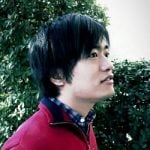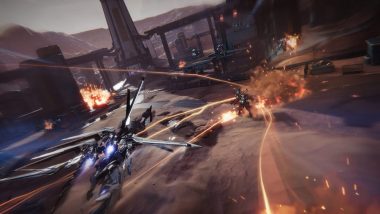Pokémon Scarlet and Violet are peppered with complaints about performance

Pokémon Scarlet and Violet have been released on November 18. The ambitious new titles incorporate a variety of brand-new features, but shortly after release, there has been a flood of reports concerning performance issues.
Pokémon Scarlet and Violet are the latest titles in the Pokémon series and have been developed by Game Freak. The biggest change in the games is that they now take place in an open world in which players can enjoy a seamless adventure across many towns and landscapes.
The Pokémon series conventions found in previous titles have been reworked, including changes like non-linear story progression and the introduction of the Let’s Go system, which allows for automatic battles with wild Pokémon without transitioning to the regular battle screen. However, the games have a number of performance issues—possibly the result of the aforementioned ambitious changes.

Polygon had three writers play the game for around 20-40 hours each, and they reported significant drops in frame rate and occasional crashes. A reviewer for IGN commented, “It is, by far, the worst-running Pokémon game I have ever played, and among the worst-running AAA games I’ve played on the Switch so far. And yes, this is with the day one patch.” In Japan, “処理落ち(Shori Ochi),” which can be translated as “frame rate drops,” was one of the trending Twitter terms for November 18.
As far as reports from regular players, a post by Twitter user @Cherrim has been met with an overwhelming response. The video in the tweet shows a Psyduck being captured during the early stages of the game and features quite a lot of choppiness. Objects in the background also pop in and out of existence, making the video quite demonstrative of the current issues. The tweet quickly became a widely shared example of the poor performance found in the games.
According to @Cherrim, the video was recorded while the game was in handheld mode, and it had been updated with the latest patch. She also mentioned that when playing in TV mode, there weren’t really any frame rate issues. There have been similar reports from players in Japan, so it’s unlikely that @Cherrim’s problems are an isolated case.
The games feature a vast open world that can be freely explored without any loading screens. It’s unclear whether this is the cause of the issues, but there are locations where the frame rate drops and many instances where the games cannot maintain a stable 30fps. The frequency of the frame rate drops also appears to be influenced by whether the games are being played in Handheld or TV mode.
YouTube channel Potato Spud Gaming created a video that shows a frame rate comparison between Handheld and TV modes. Both modes struggled to hit 30fps for the majority of the video, but when there were a lot of objects on screen, TV mode appeared to maintain a slightly higher frame rate. Both modes appeared to perform well during cutscenes and battles, with a frame rate that stayed around 30, but when exploring the open world, frame rate drops appeared to be very common.
On social media, there were also players sharing advice about microSD cards for those who purchased the game digitally. It was recommended to either use a UHS-I class card with a high transfer speed or to move the game to the Switch’s internal storage. Some have also suggested freeing up as much extra space in the internal storage as possible. It’s unclear how much of an effect these methods actually have, but performance may very well differ depending on the playing conditions.
I (the original author of this article) have also been playing the game, and at the very least, there are certainly many occasions when the frame rate drops below 30, which is the general standard that many games aim for as a minimum. These days, there are a lot of high-end games on other consoles that run at a standard of 60fps, and there are even games starting to be released that support 120fps. As a result, any games that cannot maintain a stable 30fps naturally become the target of criticism and complaints about performance.
On the other hand, the new games also feature high quality models and animations. One must also consider the performance limitations of the Switch hardware itself, and the balance that needs to be struck between performance and the open world elements. There are likely many players who wanted to see and explore this open world, even with the frame rate issues.
That said, the peculiar sight of character models appearing and disappearing has an unmistakably negative effect on the sense of immersion. Let’s hope that the issues with frame rates, crashes, etc. are improved via future updates.
Written by. Marco Farinaccia based on the original Japanese article (original article’s publication date: 2022-11-18 17:17 JST)




